The Four Levels Of Wargaming Part 2: “Command” Tactical!
July 7, 2014 by crew
Recently, we kicked off a series of articles called “The Four Levels of Wargaming” aimed at opening a discussion into some new areas of our hobby. The first installment laid out rough definitions for these levels, along with brief descriptions and a few examples of each. Response has been great, and so I now present the second article, in which we’ll take a more detailed view of wargaming on the “scaled” or “command” tactical level.
Command tactical wargames are the next step up from the “pure” tactical games typically featured on Beasts of War. Of course I don’t mean to imply that these successive levels are any more advanced or challenging than intricate games like Flame of War, Bolt Action, Infinity, or Wolsung. In fact, as “command” games add new levels of complexity to account for higher-echelon operations, you’re bound to lose a little of the pinpoint granularity that pure tactical games feature so well. One thing you don’t necessarily have to part with, however, is your miniatures. Many command-level games can still use miniatures, even in settings up to the modern day. Great examples of this are GHQ’s MicroArmour series and Command Decision, which typically use 1/285 scale vehicles to represent platoons, batteries, or sections.
Put most simply, command tactical games present individual engagements just like pure tactical games, but on larger scales of time, space, and units employed. Individual playing pieces might represent platoons, companies, cohorts, battalions, or even regiments, depending on the era and setting of your game. This allows players to explore much larger and more complex engagements that would otherwise be a little unworkable.
That being said, however, making the jump to command-level gaming implies a lot more than simply pointing at the map and declaring that each of those Land Raiders now represents five Land Raiders. The map or table just zoomed to five times as long and five times as wide, giving you 25 times more playing area. All your ranges just dropped to 20%, making deployment and movement much more important by comparison. In some eras (World War 2 for example), transport becomes vital because your units don’t start “at the point of contact” like they do in Flames of War or Bolt Action. That means bridging units, lorries, horse-drawn wagons, not to mention battalion and regimental headquarters units. All of this has to be protected with rear echelon anti-aircraft, fortifications and minefields. Because the playing area is much larger, the games allow much more realistic deployment “in depth,” and doesn’t squeeze certain units onto “front-line” boards where they honestly don’t belong. In a word, zooming out to the command level allows the player to see a bigger slice of how manoeuvre-scale formations really work, in whatever era or genre you’re playing.
Speaking of genre, command tactical works great in almost any setting. In a Warhammer 40K type setting, an invading player could drop several thousand Imperial Guards (along with hundreds of vehicles) around an enemy-held space port. The map could represent forty square kilometres, allowing the invader to choose his avenues of attack (and where he’ll send his select incursions of Space Marines) with greater freedom. This, in turn, would force the defender to be more circumspect in his defences, carefully coordinating support elements, reserves, and even a possible counterattack force if the invader chooses more than one avenue of attack. This kind of game, once designed and playtested, could be run in three to four hours, rather than the weeks that would be required (along with a dozen gaming tables) if run in a “pure” tactical model.
For black powder era games, command-level systems are often the only real option for “historic” battles which were typically very large. Games like Martin Lewis’ “Waterloo” (published by Warfrog Games) or Jim Dunnigan’s “Napoleon at Waterloo” (SPI) can be played in as little as three hours, with the whole battle recreated with less than 200 pieces. Even better, these games can also be converted to play with 15mm miniatures, with each figure representing a regiment or brigade. In a “true scale” 15mm setting, the Battle of Waterloo would require upwards of 200,000 miniatures and a board 110 feet on a side (roughly two miles at 1/100 scale).
For ancient or medieval settings, command tactical is often the best option for many of the reasons as Black Powder era-battles. Community member redben has a great topic going in the Historical Forum about his ongoing Dux Britanniarum campaigns (see his forum topic in Historical Town Square). Many fantasy-genre games like Kings of War are more “heroic,” where powerful warriors or wizards can lead armies or hordes into battle, yet still bring their powerful personal abilities into potent tactical use. Whether it’s a gold dragon’s breath weapon or an F-4 Phantom dropping napalm, the tactical effects are remarkably similar.
My all-time favourite game, however, remains Avalon Hill’s classic PanzerBlitz, set on the Eastern Front of World War 2. Counters represent platoons, and with 40-70 pieces on a side, players can command regiments, brigades, or even the business end of a division if they’re particularly ambitious. This is sometimes an unrequited love, because PanzerBlitz and its sister games (Panzer Leader and Arab-Israeli Wars), admittedly need modifications to their original rule sets to make them run like the masterpiece games they try so hard to be. Once these tweaks are made, however, these games can provide decades of not only entertainment, but genuine learning. They are so granular yet so playable, so multi-layered, and so intricate, that you literally find yourself emulating real World War 2 tactical doctrine...before you ever read about it in the history books. There are no “top-down” rules regarding special tactics or abilities for certain armies, the Germans aren’t better at certain things because the game tells you so. Simply put, what worked on the battlefield works in the game because of its inherent design, the comparative capabilities of the units, and how those units are assembled into real-world formations.
So how can a command-level game provide narrative for a traditional tactical table top? Because the two levels are pretty close, you don’t have to get that deep into command-level gaming to reap this narrative benefit. Simply set up a command tactical board, thumb through some battle maps of the engagement in question or, if it’s a fantasy or sci-fi setting, sketch the larger battle out on a sheet of graph paper. Believe it or not, you’re “playing” at the command level. Square off the section of this larger map that represents your tactical game, and you get an instant picture of what’s really going on in relation to your table. Why does the defender have to hold that bridge? Because the next battalion in line has just suffered 80% casualties and the survivors need five more minutes to withdraw their wounded across it. Why does the attacker need that hilltop? Because the division commander can’t launch his main attack until your company takes that observation point for a 500-gun artillery barrage. This is the kind of context and narrative that improves upon the “find the secret suitcase” game or the “because there’s a game marker there” objective model.
In the interest of fairness, however, it bears noting that there are some aspects of command tactical gaming that some players may find disappointing. Because the engagements are so much larger, true “heroes” are pretty rare because it’s harder for a single man, vehicle, or unit to effect this larger picture. “Cinematic moments” still happen (like when the British squares held against the French cavalry at Waterloo), but they’re admittedly less frequent. There are less dramatic “KABOOM” moments where whole handfuls of playing pieces are blown off the table. This is because the pieces represent units of dozens or hundreds of men, which lose cohesion and become “combat ineffective” long before they are annihilated outright. These are typically more scientific, less visceral games. They are exercises in averages, and averages are rarely spectacular.
Still, for my money, command tactical is probably my favourite level of wargaming. So what do you say, Colonel? Can you fight with binoculars and a radio as well as you can with a rifle and bayonet?
If you would like to write an article for Beasts of War then please contact me at [email protected] for more information!
"In a “true scale” 15mm setting, the Battle of Waterloo would require upwards of 200,000 miniatures and a board 110 feet on a side (roughly two miles at 1/100 scale)"
Supported by (Turn Off)
Supported by (Turn Off)
Supported by (Turn Off)









































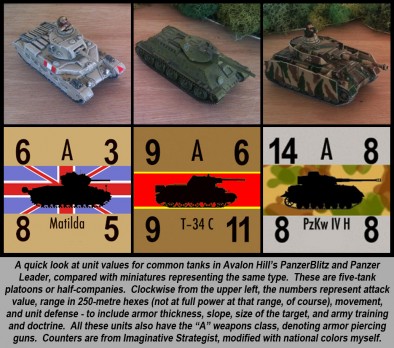
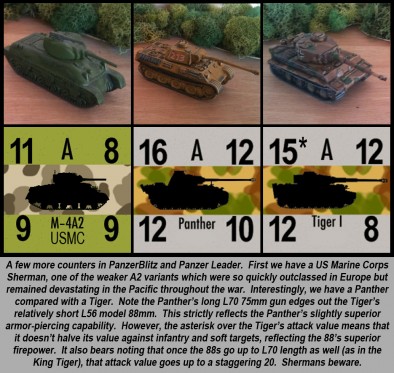

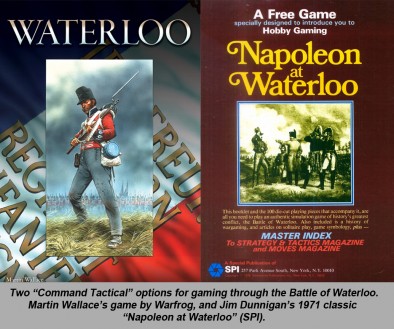

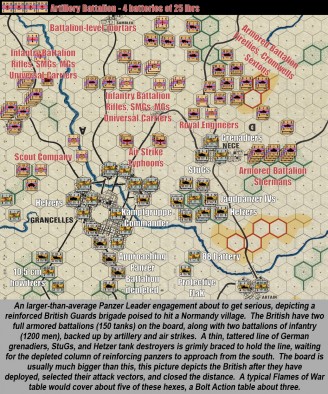
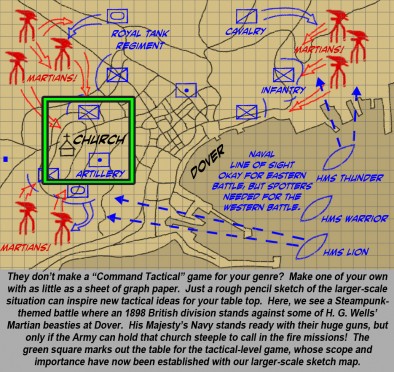
































Good stuff…Excellent read
Thanks. I was afraid it was a little long, but there’s just so much to cove. 🙂
Its a hard topic at what level to aim it…Does Grande Armee where wach 60×60 base equals a brigade some under tactical or a slightly higher level. Saying .though CD is still one of my favourites always loved it when the recon forces got into scraps before the main armies collided
The definitions I used (which are wholly mine and thus totally unofficial in any way) are: Command tactical, no matter how big, stays on one battlefield, but each piece represents a unit rather than an individual. Thus, even a Waterloo-scale game with 200,000 men on the board (figure 1000 men per figure on a manageable 200-piece table) would be “command tactical.”
I do like these articles! I love the idea of the 40k command tactical. Using imperial guard armies backed up by space marine strike teams. It seems that that would be more of a fair representation of how space marine operate in the 40k universe. Hit hard targets quickly, breaking fortifications and leaving an opponent fleeing before thunderhawking it back to orbit to redeploy to a different area of the engagement, clearing tough areas for the guard to move up and reinforce! It hits the nail on the head of how they should function to me, rather than the pitched… Read more »
From a 40k player point of view, I couldn’t have said it a better way.
Thanks for the input, everyone. Didn’t 40K / GW use to make a higher-level game? Warhammer Epic? Just going off of Wikipedia … >>> >>> >>> “The comparatively smaller size of the 6mm fminiatures also allows players to use many of the larger vehicles and creatures of the Warhammer 40,000 universe, such as Titans and Super-Heavy Tanks, even in small games, whilst also allowing longer ranged weapons such as artillery to be more realistically portrayed. Also of note is the introduction of blast markers: a simple system representing each formations degree of morale and suppression under fire which, again, adds… Read more »
Your right. Epic and Warmaster both had miniatures, where a base represented 5 men. So it was completely possible to field entire armies of mobile space marines, hell an entire company of space marines. For Warmaster, a game I feel that was superior to Warhammer, it was 10mm, where a stand of men represented some 20 or more men, and a unit then consisted of three of these stands. Again it meant being able to present massive armies. The flip side of this was that character in that game had little to no importance in a fight, other than adding… Read more »
Awesome! Glad you liked it. You’ve definitely hit on one of the advantages of command tactical (IMHO). The simple expansion to include that extra “elbow room” gives you the ability to include things like support elements, special forces, etc. If the game is too small, you might include your special forces, but don’t have enough scale to include a larger number of “regular” troops . . . thus making your special forces “not so special” by comparison. Its also difficult to include enough board space to facilitate realistic staging areas for multiple-phase landings like I think you’re describing.
You hit it on the head about the marines they would send in the imperial guard as or directly after an orbital strike to eliminate orbital defences and strong points then sending marine units to handle problems the guard run into as they advance to their targets.
Awesome. Lucky guess, eh? That and the helpful input on the 40K universe and general operating procedures. 🙂 Thanks for the feedback!
Really interesting articles, @oriskany. Keep’ em coming!
Thanks, @happyhowler . Hopefully we have a few more on the way. 🙂 We’re definitely trying to address these topics as regards to multiple genres instead of just focusing on the history-heavy World War II and Modern War material.
The guard is the canon fodder the marines are the like a sniper/tank killing the hard targets the guard struggle against especially with a fast attack where guard big hitters e.g. baneblade can’t keep up with due to size like say King Tigers would because of the terrain or vehicle weight.
Damn. These Imperial Guard almost sound like Soviet penal battalions in some cases. “You guys march that way. The mission is: ‘reconnaissance by combat.’ When the enemy opens fire, we’ll be back here counting the guns and calling in artillery missions. Thanks for the sacrifice! Now go get ’em!”
That is a good comparison. The most important skill on the CV of any Guardsman is always ‘cannon-fodder’, and using hordes of disposeable troops to engage a vastly superior foe up close while you bring your heavy guns to bear, or maneuver the Astartes in to deliver the killing blow, is exactly the kind of heartless tactic the Imperium likes to employ when using its surplus of manpower.
Sounds chilling. I guess I should say that my “joke” about “reconnaissance by combat” was nothing of the kind. That was the actual tactic written up in Red Army doctrine starting around September of 1941. To be fair, I do it sometimes in PanzerBlitz/Leader – running disposable units up to . . . or past . . . enemy units I can’t yet engage because they’re under cover. The opponent is sometimes forced (or tricked) into firing at this “bait” – allowing me to place a “spotted” counter on them and engaging them with long-range direct fire or indirect artillery… Read more »
Interestingly, each iteration of the Imperial Guard army list includes a character selection for Commissars that even have a summary execution special rule in order to ‘inspire’ the troops toward greater feats of heroism, which is clearly a reference to the soviet Commissars of certain periods if WW2 – the feared and hated political officers.
The 40k lore is full of darkly gothic little vingettes like that, and worryingly a great many of them are drawn from all too recent real world history.
In response to @vetruviangeek ‘s comment on the commissars . . . (since I have no idea where on the page this will end up) We sometimes take an “entry-level” miniatures game called Axis and Allies Miniatures to the local gaming store and set up a game for fun. Anyway, the Russian Commissar in that game has a special ability on his card . . . At the beginning of the game, kill one of your own units (presumably a cheap and relatively weak one). Then, all remaining units in your force get a +1 to their rolls. 🙂 Presto!… Read more »
Let me grab a little quote out of the 2nd book in the 40k rulebox, background on the imperial guard. “Rising up from the trenches, manning firing lines, or advancing in waves, the cruel truth about manpower in the Imperial Guard is that it is the cheapest currency in the Imperium. Commanders spend the lives of their men for the smallest goals, commiting to appalling numbers of casualties to attain the least gain of ground, or merely to appease the upper chain of command’s desire for an offensive. The Imperial Guard can afford huge losses, expending the lives of their… Read more »
Okay, I apologize if this reply doesn’t wind up where it should on the page . . . but for @lotan2012 and his quote re: the 40K quote: I’m particularly struck by the line: “merely to appease the upper chain of command’s desire for an offensive.” I could ramble for three pages about the parallels between this and the Red Army’s doctrine, at least during the first 18 months of their war with the Germans in World War II – but I won’t. When the Germans first hit them, the Red Army command structure totally broke down, and so all… Read more »
I think the turning point was that Stalin finally believed his spy in Tokyo that Japan had no territorial ambitions on the Russian mainland allowing the experienced Siberian based troops to be released for the front
Yep, @torros that was definitely one of them. Ahh . . . can’t remember his name now but it began with an “S.” He pretty much had the Japanese plan for Pearl Harbor in hand in late November of 41. Once STAVKA realized that Japan would be striking east into the Central Pacific (and of course was still embroiled with a war with China), they made the calculated guess (correct) that they wouldn’t be able to afford any strikes northwestward into Mongolia or Siberia. They’d started bringing Siberian divisions back over as early as October but this was the final… Read more »
That’s the think about the imperial guard for then it’s basically a mix of Flanders & WW2 Russian front they attack in vast waves and if any troops hesitate or don’t get the objective many or all of the units involved can be shot for cowardice or incompetence by said commissars’ as others have mentioned. Like Stalin did at the start of Germanys push for Moscow with most of the army commanders.
Yeah, I was actually doing a little reading on a few of the factions on a 40K wikisite (just so I didn’t sound like a buffoon if I tried any 40K examples in writing or in subsequent replies to people’s posts). I’m reading about some IG regiments that aren’t too bad, like the Steel Legion and the Cadian Regiments. But some others seem to be: “Here’s your rifle! The enemy’s that way! Good luck!” [click of the commissar’s pistol] “I said . . . GOOD LUCK.”
I spy was Richard Sorge, interestingly there have always been rumours about a Russian spy in the German High Command and there used to be a unnamed hero plaque in the KGB HQ, but not sure how much of that is just rumour
I have always believed that due to Sorge Roosevelt knew of the attack on Pearl Harbour and that is why the carriers weren’t at home that day…I don’t think it will ever be proved though
I have read vague references to that mysterious “Red General” in the OKH / OKW as well. You’re right, he’s never named. Didn’t know about the plaque, though. There is some documented evidence of the “Lucy” spy ring that was piping huge amounts of information from Berlin, Zossen, and Berchtesgaden, but they were operating out of Switzerland so I don’t think that’s the same thing. Then of course, there’s Bletchley Park and the ULTRA project in British Intelligence. A lot of people believe (I have no idea) that the Soviets invented this mysterious Red General so they didn’t have to… Read more »
If you think the commissars are bad you should check out Inquisitors they know how to use over kill to the nth degree.
I don’t think the British told the Russians how they were getting the information from Bletchley park I am sure I read somewhere that the Russians started using enigma after the War because they thought no one could crack it?
#1 – Quick question about the inquisitors, @zorg . . . Is sounds like they are high-ranking secret police and intelligence agents. Do they typically appear on a battlefield, or are they behind the scenes? #2 – Never knew that about the Soviets trying to use Enigma after the war. Strange, since the coding books and machines were cracked several times during the war (the Germans kept coming out with new and improved versions). One of these cracks came before the war even started, from Polish intelligence before the invasion. They gave it to the British (still hoping the British… Read more »
1/ the inquisitors are a secret secret branch of the space marine’s with (official special powers) to go where or what they want investigating for chaos/alien corruption for the good of the Emperor/Empire. For instance if they find a planet that’s been infested with Genestealers to a stage that it is almost in control of most of the government/military they will seize local navel vessels to nuke the hole planet to prevent local corruption dispersal plus all near by planets may be quarantined during their investigations’ 2/ I think the soviet doctrine was if they could not do it then… Read more »
1) Got it. 🙂 So not battlefield units, more like “roving” commanders.
2) Definitely interesting and a little strange, considering that the Soviets wound up with over 60% of Poland in the ’39 invasion, the first nation to break Enigma. The Soviets *must* have gotten their hands on some of the Polish intelligence offices / records / personnel that cracked that code, and in 6 years of occupation, I don’t know who could have held out that long against Soviet interrogation. Who knows? Maybe all these Polish officers managed to escape to the West.
@oriskany I would say more Gestapo/spy/agent combined, one of the organisations the spacemarine’s respect/fear because of the power they have. If they put up to much of a barrier to any investigations they may be considered corrupted by chaos that could be the end of a full chapter.
Like the Spanish inquisition if they say you are a witch your ass is cooked it’s as simple as that because of the fear of the HERESY war returning.
@ oriskany Found this hope this explains them better than my ramblings Development of the Inquisition In early editions of Warhammer 40,000, the Inquisition was a single, undivided organization, with a single inner order, the Ordo Malleus. The stated purpose of the Ordo was to police the Inquisition itself, but it also existed to combat the threat of the infinite hordes of Chaos. This massive war remains a secret hidden from most forces of the Imperium, including non-Malleus Inquisitors. In later editions of Warhammer 40,000, the Inquisition is divided into three Ordos: Xenos, Malleus, and Hereticus, intended to combat threats… Read more »
Got this of wiki cant find any references about soviet enigma’s perhaps they are considered to be a developing country to the allies Other countries used Enigma machines. The Italian Navy adopted the commercial Enigma as “Navy Cipher D”. The Spanish also used commercial Enigma during their Civil War. British codebreakers succeeded in breaking these machines, which lacked a plugboard.[38] Not only militaries used the Enigma, they were also used by diplomatic services. The Swiss used a version of Enigma called model K or Swiss K for military and diplomatic use, which was very similar to commercial Enigma D. The… Read more »
Great stuff, @zorg . The more I read about the Inquisitors the more I’m reminded of the Sabbat in the old White Wolf “Vampire the Masqueraue” RPG. Totally different setting, I know. But the whole “We are the cleansers . . . but who is cleansing the cleansers?” mechanic . . . along with hidden secret police organizations that are SO secret they start competing with each other, getting in each others’ way, and maybe even killing each other (Okay, that could be the SS vs. the Gestapo, the NSA vs. the CIA . . .) Great info on the… Read more »
Great article and pictures, Oriskany. I really like the martian profiles. 🙂 but, no everything looks fantastic. I want reinterate how fun and educational this type of gaming can be. And not just because I know and game with Oriskany IRL. I’ve recreated highly accurate and fun games with “tweaked” Panzerblitz/Leader/AIW rules. And learned a lot doing so. Last year I played operation Goodwood – 18JULY, 44. I had the business end of the Irish gaurds, 11th (or maybe 7th) armored, and the venerable coldstream guards running into the buzzsaw know as 1st SS Panzer, 21st panzer, and the 503… Read more »
Thanks, @amphibiousmonster . Given your experience, that Panzer Leader pic must have looked at least slightly familiar, with such a powerful British force of tanks crashing down on the north side of a large Normandy town. 🙂 Of course that pic wasn’t Goodwood specifically, but perhaps one of the many other similar operations where the British tried cracking their way into Caen (all named after British racehorses of the time, if memory serves). You’re definitely describing some serious German firepower with those units. Fortunately for the Allies, all these elite divisions were so badly depleted, to say nothing of the… Read more »
Ok, I LOVE the War of the Worlds hommage. It’s one thing to tell someone they can adapt a game to their genre, but it is sooo much cooler to SHOW them how to do it.
Thanks, @gladesrunner . We’re just trying to get some ideas and conversations started. I’m afraid anyone serious about building and running a true command-level “War of the Worlds” game still has a lot of work ahead of them. 🙂
A command tactical game set up to support and enhance the recently launched All Quiet on the Martian Front game system sounds like it would be incredible fun.
Although not exactly what your looking for, this is sort of War of the Worlds
http://www.brigademodels.co.uk/LandIronclads/index.html
You could have a look at this to
http://www.troublemakergames.co.uk/t300.htm
YOur best bet might be to have a look at an exsisting ruleset, maybe Furure War Commander or Strike Legion with its Steampunk add on http://legionnairegames.com/Products.html
That’s definitely the kind of thing I was looking for, @torros . As I present these articles, I’m always trying to provide material and examples for all the genres featured in BoW. Historical and even sci-fi games are easy, people have been publishing games and manufacturing minis for them for years on all kinds of gaming levels. Other genres like Steampunk or “Cthulu-esque” Victorian are a little tougher. A “War of the Worlds” example was the best I could quickly come up with, but these Land Ironclads are another! 😀
I’ve seen pics and minis (on Beasts of War) regarding All Quiet on the Martian Front. Sadly, I don’t know much about it yet, so my only question would be about the relative scales of the opposing sides. What I mean to say is, in a War of the Worlds setting, we have one, two, or three individual tripods wiping out whole battalions and regiments of “Earth” forces. This would almost DEMAND a command tactical solution, since you would need hundreds or thousands of Earth troops to even have a hope of slowing down a tripod. In such a model,… Read more »
While rather more powerful than the depiction of the standard Tripod designs within the Qll Quiet on the Martian Front setting, the idea of battalions of men and divisions of tanks going up against immensely powerful Tripods is simply too awesome to pass up. In the background of the game it is hinted that the Martians have access to technology and weaponry that the human forces have either not encountred yet at all, or there have never been any survivors among those who have run into it. A Martian superweapon class Tripod of suitably intimidating scale and power is eminently… Read more »
In response to @vetruviangeek ‘s comments on AQotMF: Indeed, I’ve poked around on the web and started to get a handle on the “balance of power” between the two sides. Where the Martians certainly still have the technological edge, it doesn’t seem to be nearly as great as it was in the original novel, 1950s movie, or recent 2005 movie. With no previous exposure to AQotMF, I was strictly going off these movies with the posts, and the map in the article (8 tripods against several regiments = thousands of men, plus three battleships crewed by 1500 men each). Great… Read more »
Okay, these replies are not cascading beneath the original comments quite like I’d hoped. You’ll find my response about All Quiet on the Martian Front nearby on this page.
Thanks again for the input and feedback on the article!
Well isn’t All Quiet on the Martian Front 15mm? Could you use them with the new World War I minis theyare coming out with for Flames of War?
I don’t see why not, although I’m sure AQotMF has their own 1910’s era vehicles.
Or you could use GHQ’s 6mm 1/285 miniatures to make the tripods truly terrifying in scale! Bwahaha!
“the Red Army command structure totally broke down, and so all they could send was a general order: “Attack everywhere.” “Attack regardless.” “When in doubt, attack. Attack, attack, attack.” ”
“NOW YOU GET UP THERE AND ATTACK!! ATTACK WITH EVERY MAN AT YOUR DISPOSAL!!!”
Ah yes, Nick Noltke from “Thin Red Line,” a great movie.
“For cryin’ out loud, Storos! Do I have to give you a catch-up lesson on infantry tactics while you men are getting their a$$es shot off across that ridge?”
that was their choices kill their men or the firing squad a bit limited of Corse you could still be shot if command though the army needed a moral boost.
Like they say in “Enemy at the Gates” (not that we should use movies as historical references) …
“Here the men’s only choice is between German bullets and ours.”
Just wanted to chime in and say that I’ve really enjoyed your two articles thus far and am impatiently awaiting the third installment! These articles remind me of why I got into wargames in the first place since as the saying goes, one can lose the battle and still win the war – which if you only play 1-1 slugfests with no objectives, is not entire correct… 🙂 Question for oriskany and/or anyone else still reading these comments: I’m a HUGE Kings of War fantasy player and am doing everything in my power to set up fantastic command tactical games… Read more »
Great question, @stlwarrior , and thanks for the input. 🙂 I’ve seen Kings of War demo games online so I’m pretty sure I have an idea what it’s about in a tactical sense (used to play TSR’s Battlesystem, which seems vaguely similar). Honestly, for command tactical or operational-level games, I almost always make my own maps and counters. I use Adobe Photoshop. For maps, the trick is to set up a Photoshop “layer” of a hex grid or a square grid or your zones or whatever, then draw your terrain features underneath that on another layer. One sneaky trick (I… Read more »
good article, great pictures
Thanks very much, llopez0010 . Glad you liked them!